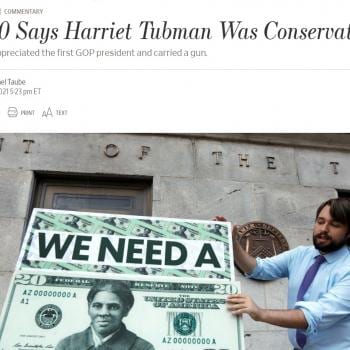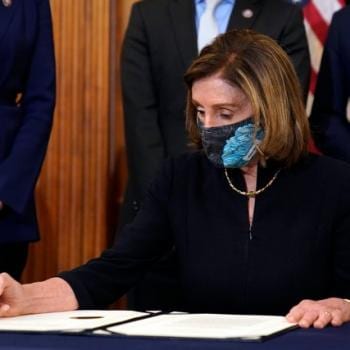I was homeschooled from kindergarten through high school, and like many homeschooled students, I studied from creationist science textbooks. The most prominent science curriculum in our community was Apologia, which calls itself an “educational ministry” and offers “Learn, Live, and Defend the Faith” as its motto.
Creationists often argue that creationism should be taught in public schools alongside evolution so that students can “hear both sides” and decide for themselves. Beside the obvious problems with this argument – scientists are infinitely more qualified to decide what is and is not accurate science than are teenagers – is the fact that it is a bit hypocritical. I, after all, was never allowed to “hear both sides,” and nor are plenty of other young people who are homeschooled or sent to Christian schools.
My apologia biology textbook was divided into sixteen “modules,” each intended to take two weeks. One of these modules covered evolution. I offer its title and contents for you below (for the full table of contents of the apologia biology textbook, click here):
MODULE #9:
Evolution: Part Scientific Theory, Part Unconfirmed Hypothesis
Introduction
Charles Darwin
Darwin’s Theory
Microevolution and Macroevolution
Inconclusive Evidence: The Geological Column
The Details of the Fossil Record: Evidence Against Macroevolution
The Cambrian Explosion
Structural Homology: Formerly Evidence for Macroevolution, Now Evidence against It
Molecular Biology: The Nail in Macroevolution’s Coffin
Macroevolution Today
Why Do So Many Scientists Believe in Macroevolution?
The entire point of this module was to explain why evolution is wrong. The only discussion of evidence was to show that the evidence is all against evolution. No actual evidence for evolution was discussed, except to show that it was fake or misinterpreted, or actually proved evolution was wrong.
Creationism was also integrated into the rest of the textbook, into almost every module, through comments like “isn’t God’s design obvious?” and “clearly, this mechanism could not have ‘evolved.'” For example, when discussing the formation of scabs in the human anatomy textbook, designed to serve as an advanced biology curriculum, the text explains that there is no possible way that every mechanism in the chain reaction that forms scabs could have evolved like that. Little comments and commentary of that sort are peppered through each apologia science textbook.
When I arrived at college and came in contact with the actual theory of evolution it was like learning about it for the first time. I realized that the version of evolution I had been taught was only a straw man version set up to be knocked down. I realized that I had never really actually learned about the theory of evolution and what it says, about the evidence for it and the complexities of it. I learned that what was taught in that module on evolution in my apologia biology textbook was often completely false, or left out important information, or was simply misleading. And, of course, I learned that scientists know exactly how the mechanism for scab formation evolved. I was appalled by the depth of my deception.
So when I hear the talk of teaching “both sides,” I can’t help but feel that if creationists had their way, they would never ask for teaching “both sides” at all, but would instead prefer to teach only their side. Creationists use the “both sides” argument both because they know that in today’s world there is no way to ban evolution from the schools entirely, and because it is a good rhetorical tool.
Creationists should be fighting their battle in the academy. They should be writing academic articles and getting published. They should be doing research and experiments. They should be arguing it out with other scientists. Instead, they fought their battle over the terrain of my teenage mind.









